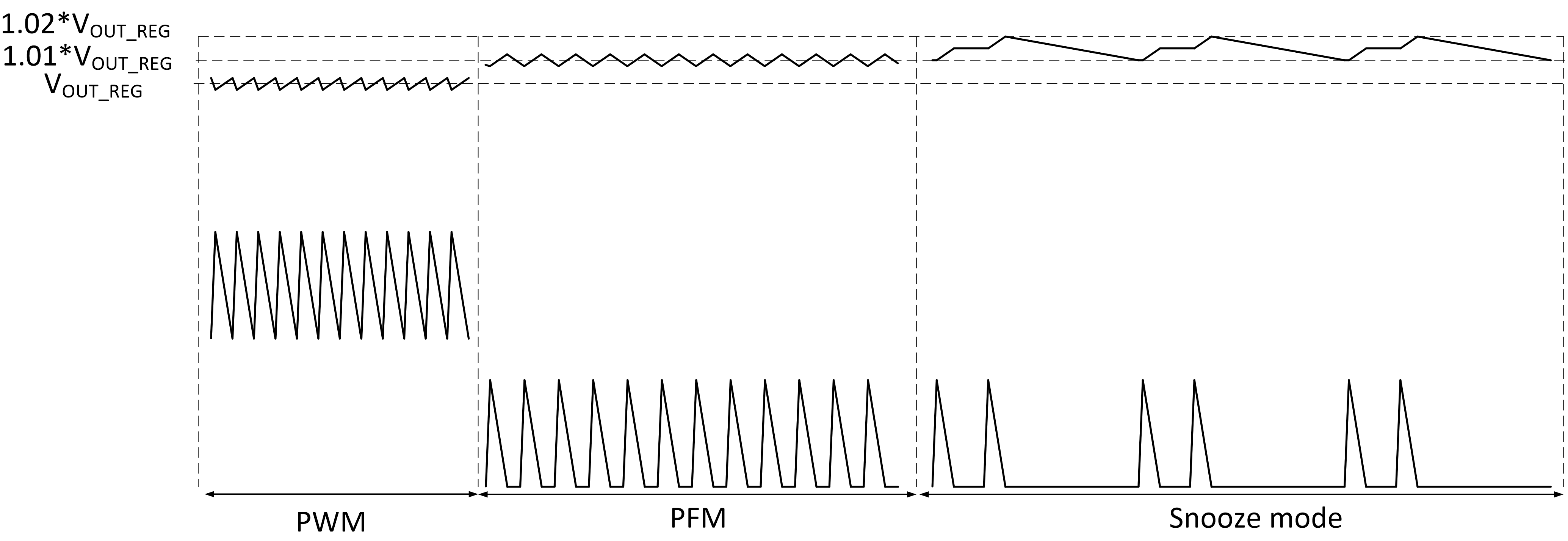SLVSFH6C January 2021 – December 2021 TPS61094
PRODUCTION DATA
- 1 Features
- 2 Applications
- 3 Description
- 4 Revision History
- 5 Pin Configuration and Functions
- 6 Specifications
- 7 Detailed Description
- 8 Application and Implementation
- 9 Power Supply Recommendations
- 10Layout
- 11Device and Documentation Support
- 12Mechanical, Packaging, and Orderable Information
Package Options
Mechanical Data (Package|Pins)
- DSS|12
Thermal pad, mechanical data (Package|Pins)
- DSS|12
Orderable Information
7.4.5.3.3 Snooze Mode
The TPS61094 integrates Snooze mode to decrease quiescent current. If the load current is reduced further, the boost converter enters into Snooze mode. In Snooze mode, the boost converter ramps up the output voltage with several switching cycles. Once the output voltage exceeds a setting threshold, the device stops switching and goes into a sleep status. In sleep status, the device consumes less quiescent current. It resumes switching when the output voltage is below the setting threshold. It exits Burst mode when the output current can no longer be supported in this mode. Refer to Figure 7-7 for Burst mode operation details.
 Figure 7-7 Boost Mode
Operation
Figure 7-7 Boost Mode
Operation